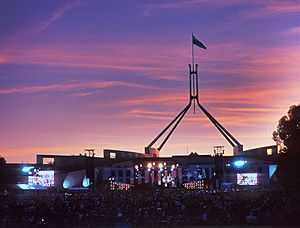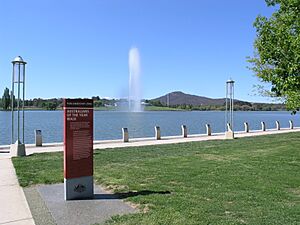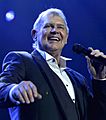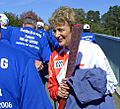Australian of the Year facts for kids
Quick facts for kids Australian of the Year |
||||
|---|---|---|---|---|
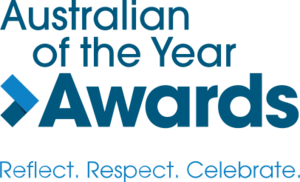 |
||||
| Presented by | National Australia Day Council | |||
| Date | 25 January | |||
| Country | Australia | |||
| First awarded | 1960 | |||
| Television coverage | ||||
| Network | ABC TV | |||
|
||||
The Australian of the Year is a special award given to an Australian citizen. It's presented by the National Australia Day Council, which is a group that works to celebrate Australia Day. Similar awards are also given out in each state and territory. This award celebrates people who have made a big difference to Australia.
| Top - 0-9 A B C D E F G H I J K L M N O P Q R S T U V W X Y Z |
History of the Award
Since 1960, the Australian of the Year award has been a key part of the Australia Day celebrations. It has become one of the most important awards in the country. The announcement of the winner is a big public event, even shown on TV across Australia. This award helps us understand what's important to Australians, like how we connect with the world, the role of sport, the mix of different cultures, and the special place of Indigenous Australians. It also sparks discussions about what kinds of achievements deserve public recognition.
The award program encourages people to be active citizens and highlights individuals as role models. Over time, three more awards were added: for Young Australians, Senior Australians, and the "Australia's Local Hero" award for people who do great things in their local communities.
Who Supports the Award?
The Australian of the Year award gets a lot of support from private companies. For example, the Commonwealth Bank has supported it for over thirty years. The strong connection with the Australian Government also helps make the award well-known and respected.
Award Winners Through the Years
The 1960s: Starting Strong
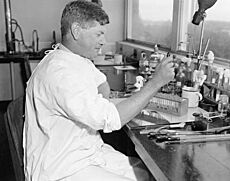
In the 1960s, groups in different states worked hard to make Australia Day more popular. The Victorian Australia Day Council started a new award in January 1960 called the 'Australian of the Year'. Their chairman, Sir Norman Martin, said it was a great way to celebrate a leading citizen who had made an amazing contribution to Australia's culture, economy, science, or arts.
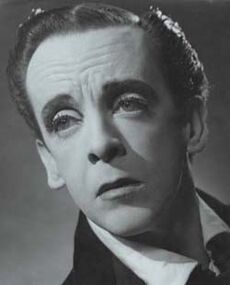
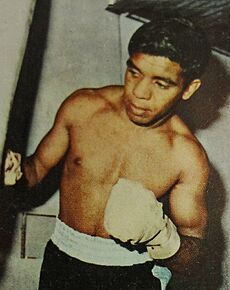
For the first twenty years, a special group of five people chose the Australian of the Year. This group included important figures like the Victorian Premier and the Lord Mayor of Melbourne. Their first choice, Nobel Prize winner Sir Macfarlane Burnet, was very popular. People felt this new award showed Australia was becoming more confident as a nation.
In this first decade, the award often went to people who had achieved great things internationally. This included sports stars like swimmer Dawn Fraser and boxer Lionel Rose, as well as artists like opera singer Joan Sutherland and the band The Seekers. The award aimed to celebrate "the person who has brought the greatest honour to Australia."
The 1970s and 1980s: A National Award
As the award grew, it became clear that it needed to be more national, not just linked to Victoria. Other groups started their own "Australian of the Year" awards, which caused some confusion. To fix this, the Australian Government created the National Australia Day Council (NADC) in 1979. This new national group took over the main award.
The NADC changed how the winner was chosen, bringing in a group of ten important Australians from different areas. Even with this new process, the first winner chosen by the NADC, historian Manning Clark, caused some debate. This showed how important the award had become to Australia Day. Over time, the NADC board itself started choosing the winner.
During the 1980s, there was a move to choose winners who were well-known and could help promote Australia Day to everyone. This included famous people like marathon runner Robert de Castella, comedian Paul Hogan, singer John Farnham, and cricketer Allan Border. This helped the award become even more popular with the public.
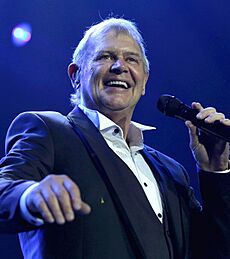
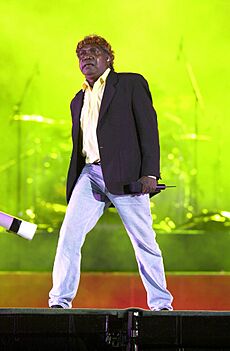
The 1990s: Celebrating Diversity
In the 1990s, the Australian of the Year award started to reflect important discussions about Australia's identity. The NADC promoted multiculturalism (many cultures living together) and reconciliation (improving relationships with Indigenous Australians). Winners during this time included Aboriginal singer Mandawuy Yunupingu, environmentalist Ian Kiernan, and Chinese-Australian doctor John Yu.
Many Indigenous Australians have been honored with this award. The first was boxer Lionel Rose in 1968. Since then, many more Indigenous people have been recognized for their achievements in sports, music, law, and more. Some have also spoken about their concerns regarding Australia Day being celebrated on 26 January.
Before 1994, the award was given for achievements in the previous year. But from 1994 onwards, it became an award for the upcoming year. This meant there was no Australian of the Year for 1993.
The 2000s Onwards: A Wider View
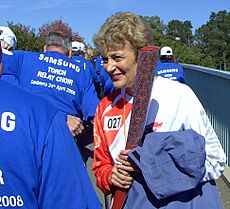

People often discuss the balance of winners from different fields like sport, science, and the arts. Many sports stars have won, but scientists and artists have also been well-represented. For example, by 2009, thirteen scientists (ten of them in medical science) and ten artists had received the award.
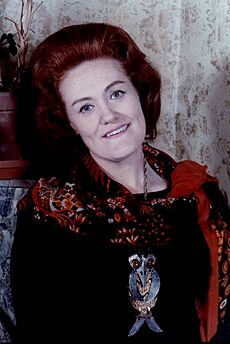
Many winners don't fit into just one category. They have excelled in areas like public service, community work, business, and religious leadership. While more men have won the award, the number of women winners has been growing.
Sometimes, there are discussions about how the winners are chosen. The NADC works to make sure the process is fair and that the awards truly represent the amazing people in Australia.
In 2016, there were some concerns raised about the selection process and the priorities of the recipient. The Sydney Morning Herald suggested that the selection board would review the process to improve public confidence in the awards for the future.
The awards program celebrates a wide range of achievements. In 1979, the NADC started the 'Young Australian of the Year' award. Twenty years later, the 'Senior Australian of the Year' award was introduced. In 2003, the 'Australia's Local Hero' award was added. With these four categories, the NADC now recognizes 128 inspiring Australians every year.
Young Australian of the Year
For the first twenty years of the Australian of the Year Awards, there wasn't a specific award for younger Australians. During this time, some young sports stars like Dawn Fraser and Lionel Rose won the main award. Shane Gould is still the youngest person to be named Australian of the Year.
In 1979, the NADC decided to create a new award just for young Australians. The first winner, Julie Sochacki, who worked with young people who couldn't find jobs, was named Young Australian of the Year in January 1980.
Between 1996 and 2003, a group called Awards Australia helped manage the Young Australian of the Year Awards across the country. During this time, many talented young people were recognized, including Olympic swimmer Ian Thorpe and tennis player Lleyton Hewitt. In 2003, the NADC took back full responsibility for the awards.
Senior Australian of the Year
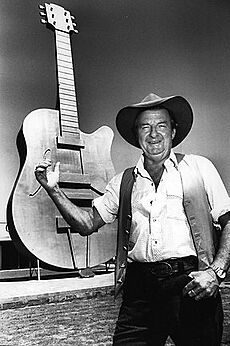
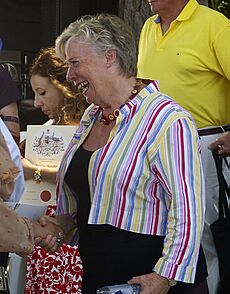
The Senior Australian of the Year award started in 1999, when the United Nations declared it the 'International Year of Older Persons'. The first winner was famous country music star Slim Dusty.
At first, this award was given out in October, separate from the Australia Day celebrations. But a few years later, the NADC decided to bring all the awards together. So, the Senior Australian of the Year announcement moved to January, joining the other awards. This helped make the Senior Australian of the Year award more well-known, as it was announced on the same night as the Australian of the Year.
Australia's Local Hero
In 2003, the NADC introduced a fourth award category called the "Local Hero Award." This award was created to recognize everyday people who do amazing things to help their local communities. It was part of a bigger plan by the NADC to encourage good citizenship.
How Winners Are Chosen
The way the Australian of the Year is chosen has changed a lot over the years. In the early days, a small group picked the winner from a short list. For example, in 1971, Evonne Goolagong was chosen from only 18 nominees.
Over time, the NADC realized that getting more people involved in nominating was important. They wanted "ordinary" Australians to have a say in who should be Australian of the Year. They started distributing brochures to encourage nominations.
Today, the nomination process is a key way for the NADC to connect with the Australian community. The awards are not just about choosing four national winners, but about encouraging Australians to think about citizenship. Since 2004, a new selection process has been used. State and territory groups choose finalists in each category. Then, the NADC board chooses the national winners from these finalists. The winners are announced in January.
Award Statistics
Awards by Category
| 1960–69 | 1970–79 | 1980–89 | 1990–99 | 2000–09 | 2010–19 | 2020–29 | Total | |
|---|---|---|---|---|---|---|---|---|
| Science (non-medical) | 1 | 2 | 0 | 0 | 2 | 1 | 0 | 6 |
| Arts | 3 | 2 | 2 | 1 | 1 | 1 | 0 | 10 |
| Medical science | 1 | 0 | 0 | 3 | 3 | 2 | 1 | 10 |
| Indigenous affairs | 0 | 2 | 1 | 1 | 1 | 0 | 0 | 5 |
| Religion | 0 | 1 | 0 | 1 | 0 | 0 | 0 | 2 |
| Community Service | 0 | 1 | 0 | 1 | 0 | 4 | 2 | 8 |
| Politics/Public office | 1 | 1 | 1 | 0 | 0 | 0 | 0 | 3 |
| Sport | 4 | 2 | 3 | 2 | 2 | 1 | 1 | 15 |
| Non-science academic | 0 | 0 | 2 | 0 | 0 | 0 | 0 | 2 |
| Military service | 0 | 2 | 0 | 0 | 1 | 0 | 0 | 3 |
| Business | 0 | 1 | 1 | 0 | 0 | 2 | 0 | 4 |
Awards by Gender
| 1960–69 | 1970–79 | 1980–89 | 1990–99 | 2000–09 | 2010–19 | 2020-29 | Total | |
|---|---|---|---|---|---|---|---|---|
| Female | 2 | 3 | 2 | 1 | 2 | 3 | 2 | 15 |
| Male | 7 | 11 | 8 | 8 | 8 | 8 | 2 | 51 |
What the NADC Aims For
The National Australia Day Council (NADC) has a clear purpose:
- To bring all Australians together to celebrate, especially on Australia Day.
- To help people understand what Australia Day means through activities, learning, and discussions.
- To encourage good citizenship and celebrate great achievements by recognizing people who serve their communities and the nation.
The Australian of the Year Awards are a big part of this third aim. They provide a high-profile way to celebrate outstanding achievements. The NADC wants Australians to celebrate what's great about Australia and being Australian every year on 26 January.
What Makes a Winner?
The rules for choosing the Australian of the Year have changed over fifty years. At first, it was about honoring someone who brought "the greatest honour to Australia" internationally. But over time, achievements within Australia became more important. The official rules are quite broad, so the NADC board and the mood of the country often influence who is chosen.
Currently, the selection groups look at three main things when considering nominees:
- They must be excellent in their field.
- They must have made a big contribution to the Australian community and nation.
- They must be an inspiring role model for others.
This third point is very important for the NADC's goal of encouraging good citizenship.
Award Announcements
In the 1960s and 1970s, the Australian of the Year award was given out at a lunch in Melbourne. The winner was usually announced about two weeks before Australia Day to help promote the celebrations. These events were sometimes quite formal.
Since the 1960s, the annual announcement has become much bigger. After the NADC took over in 1980, the award was often presented at an Australia Day concert, which moved around the country and was often shown on TV.
A very memorable event happened in 1994 when Ian Kiernan, an environmentalist, received his award. During the ceremony, an incident occurred involving a person rushing towards Prince Charles. Kiernan and the Premier of New South Wales helped to stop the person. It was a serious security issue that made headlines.
Since 2004, the awards ceremony has been held on Australia Day Eve (25 January) in Canberra. The finalists enjoy a special day, including meeting the Prime Minister and the Governor-General. The winners are announced on a stage in front of Parliament House, with thousands of people watching and a national TV audience. This big event is very different from the smaller announcements of the past.
Medals and Trophies
The medals and trophies given to the Australians of the Year also show how ideas about Australian identity have changed. In 1960, a competition was held to design the first trophy. The winner, Victor Greenhalgh, created a bronze medal featuring Arthur Phillip, who was described as 'The Outstanding Australian [of] 1788.'
When the NADC took over in 1980, the winner received a framed certificate. Later, for the 1986 award, artist Michael Tracey created a new trophy. It was a figure holding the Australian flag, made from steel and pewter.
In the early 1990s, glass artist Warren Langley designed a new trophy based on the Australia Day logo. After some changes to the logo, Langley created another trophy featuring a map of Australia.
The current Australian of the Year trophy was designed in 2004 by Kristin McFarlane. She uses glass, text, and images to create beautiful art. She decided to use a map of Australia because it's an old continent and a recognizable shape. She also included words from the Australian national anthem, "Advance Australia Fair."
Australians of the Year Walk
The "Australians of the Year Walk" in Canberra is a special pathway designed by the National Capital Authority. It has a series of stands, seats, and lights. Along the path, there are metal strips that look like music lines. The stands are placed like musical notes, following the tune of the national anthem, "Advance Australia Fair."
Each stand has a metal plaque with the names and pictures of an Australian of the Year. They are arranged in order, starting from the western end of the path near Commonwealth Avenue Bridge.
The walk is located along the shore of Lake Burley Griffin in Canberra, between the National Library of Australia and the Commonwealth Avenue Bridge.
The walk was officially opened by the then Prime Minister of Australia John Howard on Australia Day, 26 January 2006.
In 2007, journalist Mark McKenna visited the walk and saw it as a symbolic memorial for the nation. He found the empty stands, waiting for future winners, particularly interesting. He wondered what kind of nation Australia would become in the future.
The Awards in Australian Society
The Australian of the Year Awards are one of many ways Australia expresses its national identity. After more than sixty years, they have become an important part of how Australians talk about their past, present, and future. People from other countries, like BBC correspondent Nick Bryant, have also noted that the awards offer an interesting look into the Australian character.
One challenge for the NADC is that it's hard to show the full range of Australian achievements with only one winner in each category every year. Discussions often happen about the number of winners from science, arts, and sport. In the future, these talks might also focus on gender balance and cultural diversity. The NADC believes the true value of the awards program can be seen by looking at all the finalists each year, not just the winners. They now focus on promoting the state finals to highlight the wide variety of achievements recognized.
The awards program has also been featured in popular culture. The TV show We Can Be Heroes: Finding The Australian of the Year (2005) is a funny show where actor Chris Lilley plays five different people nominated for the award. The show makes fun of what people sometimes look for in role models. However, many people, like the magazine Eureka Street, believe the awards are important for building community. They help young people set goals and encourage older people to be proud of what they've achieved.
Eureka Street suggests that the awards successfully help the National Australia Day Council achieve its goal: to "promote good citizenship, values and achievement by recognising excellence and service to the communities and the nation."
See also
- List of Australian of the Year Award recipients
- List of Young Australian of the Year Award recipients
- List of Senior Australian of the Year Award recipients
- List of Australian Local Hero Award recipients
- Orders, decorations, and medals of Australia
Images for kids
-
Sir Robert Helpmann, Australian of the Year 1965
-
Lionel Rose, 1968 Australian of the Year
-
John Farnham was Australian of the Year in 1987
-
Mandawuy Yunupingu, lead singer of Yothu Yindi, was Australian of the Year in 1992
-
Fiona Stanley, Australian of the Year 2003
-
Ita Buttrose, Australian of the Year 2013
-
Dame Joan Sutherland, Australian of the Year 1961
-
Slim Dusty, the first Senior Australian of the Year
-
Maggie Beer, Senior Australian of the Year 2010
-
The Australians of the Year Walk is on the shore of Lake Burley Griffin, Canberra


